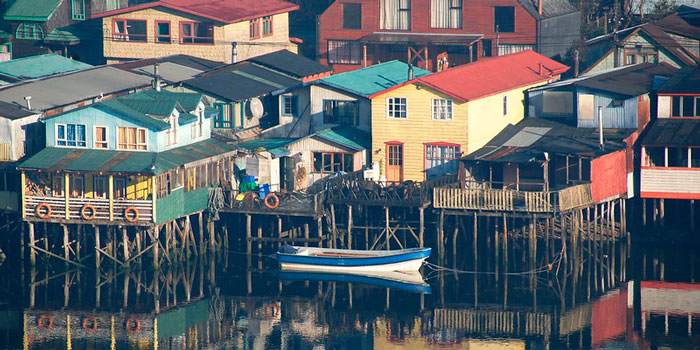Chiloé Agriculture, Chile
GIAHS since 2011

Site location Chiloé Island, Chile
Area of GIAHS: -
Population working for this system: -
Topological Characteristics: moderate acidity
Climatic Classification: cold temperate conditions
Ethnic Groups/Indigenous People: -
Primary Income Sources: agriculture
-------------------------------------------------------------------
Global importance
Archipelago of Chiloé in Chile is a unique in-situ reserve of many species underlying the patience and farmers’ work for millennia. It has been considered as the home of many species of endemic flora and fauna in danger of extinction, being its biodiversity of global importance. For this reason, it is classified as one of the ecological regions of highest priority of Latin America.
Potato is the main cultivated crop in these remote islands, and its cultivation is of fundamental importance for the life of local communities. For this reason, production of potatoes is at the center of their traditions, culture, beliefs, social practices, and mythologies, which are still in use at the dawn of the third millennium.
Food and livelihood security
The surface assigned by farmers to the tubercle seedtime is 4,000 hectares, with a yield of 1,62 tons per hectare and the production goes completely almost to self-consumption, without having a greater stimulus than a subsistence agriculture, which is necessary to make it sustainable In relation with food security, it is important to emphasize the diversity of varieties, which historically facilitated to the native population the selection of the best ones for their culinary virtues, transforming the potato in the base of the daily diet.
The great majority of people are engaged in the production of potatoes, oats, wheat and vegetables, with livestock raising i.e. sheep, pigs, cattle and poultry. In addition, these activities are complemented with handicrafts made from sheep wool and natural fibers. Farming activities are for subsistence and surpluses are occasionally sold in local markets.
Biodiversity and ecosystem functions
Traditionally Indigenous communities and farmers of Chiloé cultivated native varieties of potatoes (800 to 1,000), cultivated before the agricultural modernization. For different reasons, including the introduction of improved seeds, the pressure of technological transfer programs, the appearance of diseases like the Late Blight, the lack of market and information on this genetic wealth within the Chiloé community, there has been a generalized erosive process of these materials, with a very reduced amount of varieties subsisted over time in more and more isolated areas from the archipelago. Nowadays this number has been reduced to 91 varieties.
Nowadays, it is important to encourage the public to recognize Chiloé as a source of culture, traditions and a wide genetic biodiversity, stimulating the sustainable development of the archipelago.
Knowledge systems and adapted technologies
In some sectors of the archipelago, recognition of the value of a common heritage still exists, represented by the seeds that have been maintained through centuries, especially by elderly women with the knowledge and wisdom not expressed in written texts. It has allowed the development of a precious and totally effective agrarian culture although, the native varieties of potatoes are not practically known in the market.
In the past, rural women have carried out the biodiversity conservation activities in the small plots of their family vegetable gardens. They are the source of this knowledge and responsible for gathering seeds of different varieties in their respective communities.
Cultures, value systems and social organizations
As a cultural element, the production of potatoes has strong roots in the identity of Chiloé, traditionally known as “the Chilota culture of the potato”, which has been inherited generation after generation in spite of foreign influences. A series of social and cultural activities around its cultivation are generated, for example: “mingas”, an old tradition that reunites the community at the seedtime and harvests of the tubercle, the wide culinary product range derived from potatoes and related mythology and legend.
The social organization is based on coexistence, collaboration and non-competition, these values end up being elements of cohension for the community that also strengthen the organizations.
Remarkable landscapes, land and water resources management features
Practicing a sustainable agriculture for millennia, farmers of Chiloé have been the custodian of the landscapes and the island. Land and water resources have been preserved thanks to a sustainable utilization.

